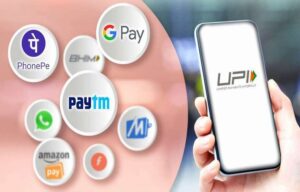From Queues to Clicks: The Digital Shift in Everyday Bill Payments

In today’s fast-paced world, technology has transformed the way we conduct our daily lives. One of the most significant shifts has been the transition from traditional bill payments to digital solutions. Gone are the days of standing in long queues at utility offices; instead, consumers are now experiencing the convenience of technology through a simple click. This article delves into the digital revolution in bill payment, highlighting the evolution, benefits, and implications of this shift.
The Traditional Approach: A Thing of the Past
Once upon a time, paying bills involved physically visiting offices or authorised centres, often leading to long waits and frustration. People would mark their calendars to remember due dates, dreading the time-consuming ordeal. The typical process was fraught with inefficiencies and possibilities for human error.
This method was not only tiresome but also subject to operational hours and geographical constraints. Imagine navigating traffic to pay an electricity bill, only to find yourself stuck in a queue. It was a system that needed a makeover, and technology has provided a much-needed facelift.
The Advent of the Payment App
As the internet and smartphones became more mainstream, a wave of digital solutions entered the market. Payment apps like Paytm, Google Pay, and PhonePe have revolutionised bill payment methods, providing a seamless experience at one’s fingertips. These apps have not just catered to urban areas but have also penetrated into rural regions, where accessibility was once limited.
Convenience and Accessibility
The most apparent benefit of embracing a payment app is convenience. Bills can now be paid anytime, anywhere, often with just a few taps on a smartphone. There’s no need to keep reminders for due dates, as these apps provide timely notifications, ensuring that users never miss a payment.
Moreover, such apps support a wide array of billers, ranging from electricity, water, and gas to mobile recharges and DTH services. This consolidation of services in one place simplifies life significantly.
Security and Transparency
Security, understandably, is a concern when money is involved. Fortunately, payment apps use state-of-the-art encryption and multi-factor authentication to ensure that transactions remain secure. The introduction of features like biometric authentication adds an extra layer of safety, providing peace of mind to users.
Furthermore, digital payments offer transparency and record-keeping that physical receipts simply cannot match. Users can easily track their payment history, download receipts, and even set spending limits.
Economic and Environmental Impacts
The move to digital has wider implications beyond individual convenience. The cashless approach supported by payment apps significantly reduces the burden of handling physical cash, a benefit for both consumers and service providers. Transactions are quicker, reducing operational costs and enhancing the efficiency of financial systems.
From an environmental perspective, the reduction in paper usage due to electronic bills is noteworthy. Considering the number of bills generated daily, the potential saving in paper, ink, and transportation marks a significant step towards sustainability.
Challenges and Considerations
Despite the evident benefits, the digital shift is not without its challenges. Issues such as digital literacy, cyber fraud, and internet connectivity can hinder widespread adoption. According to a recent survey, while urban areas are rapidly embracing digital payments, a significant portion of rural India still faces barriers due to lack of infrastructure and awareness.
Internet security remains a crucial area for improvement. The industry must continue to educate users on recognising fraud and ensure robust security measures are in place to address potential threats.
The Future: What’s Next for Digital Payments?
Looking ahead, the potential for innovation in digital payments is vast. Blockchain technology, for example, holds promise in enhancing security and transparency. Additionally, the integration of artificial intelligence could personalise user experience, offering customised payment solutions and financial advice.
The advent of 5G technology will further improve the speed and reliability of payment apps, making them even more efficient and accessible. As the government continues to promote its Digital India initiative, we can anticipate even more support for infrastructure that enhances digital transactions.
Conclusion: Embracing the Change
The shift from cumbersome queues to seamless clicks in bill payment represents more than just a technological advancement; it is a cultural shift towards efficiency and modernity. While challenges remain, the overall trend paints a promising picture of inclusivity, accessibility, and convenience.
As we move forward, embracing this change and staying informed about new developments is crucial. The digital payment landscape will continue to evolve, and being prepared to adapt is key to making the most out of this transformation. So, the next time you need to pay a bill, remember that the future is just a click away, waiting to simplify your life.
In embracing this digital shift, we are not just changing how we pay bills—we are, indeed, redefining how we live.







